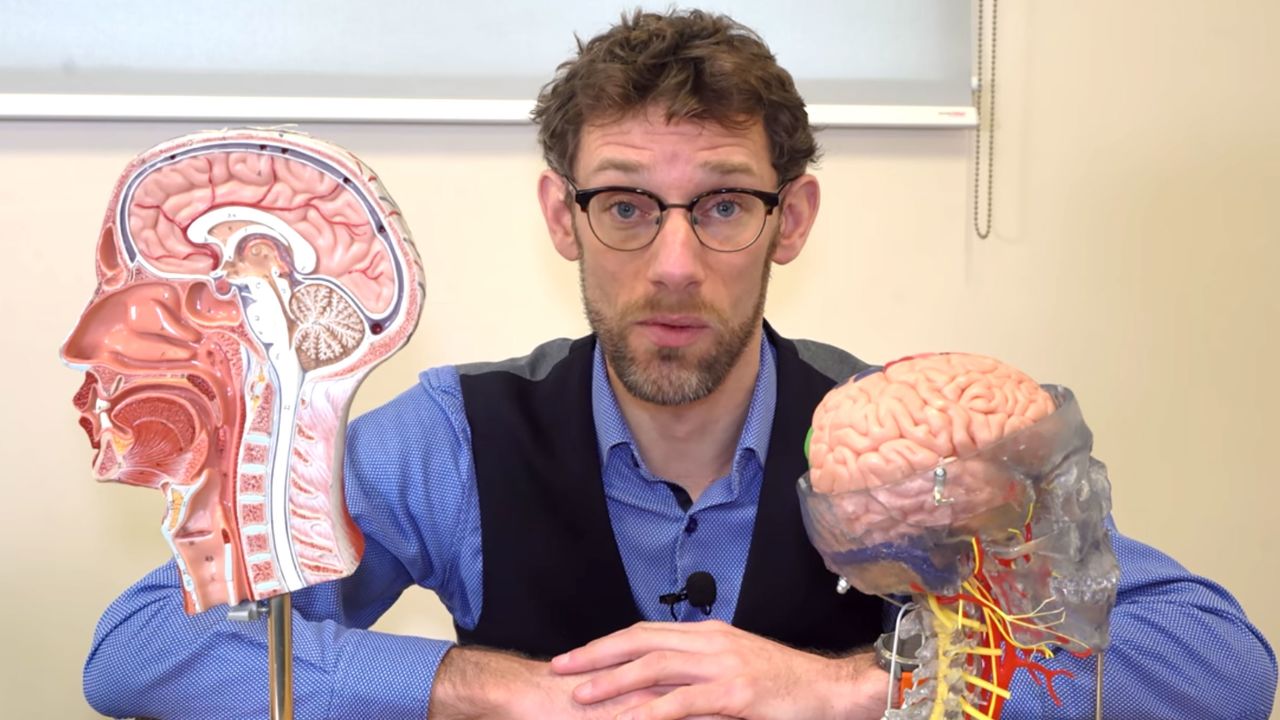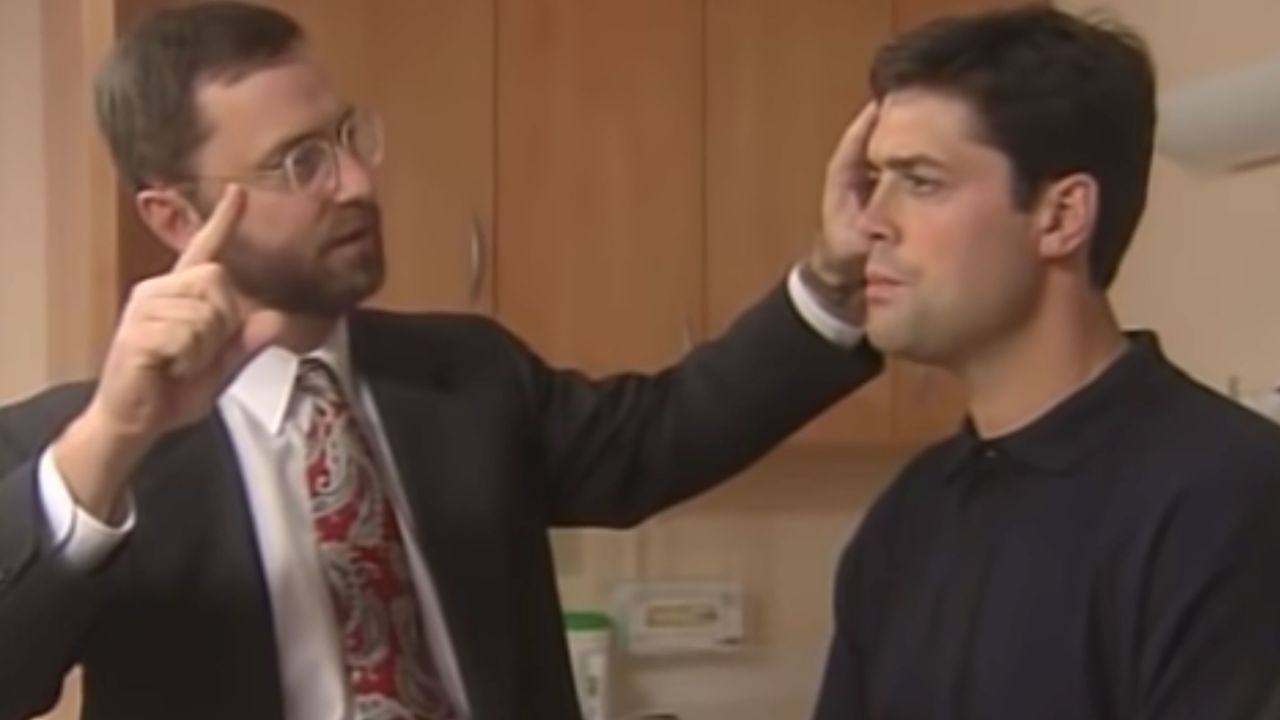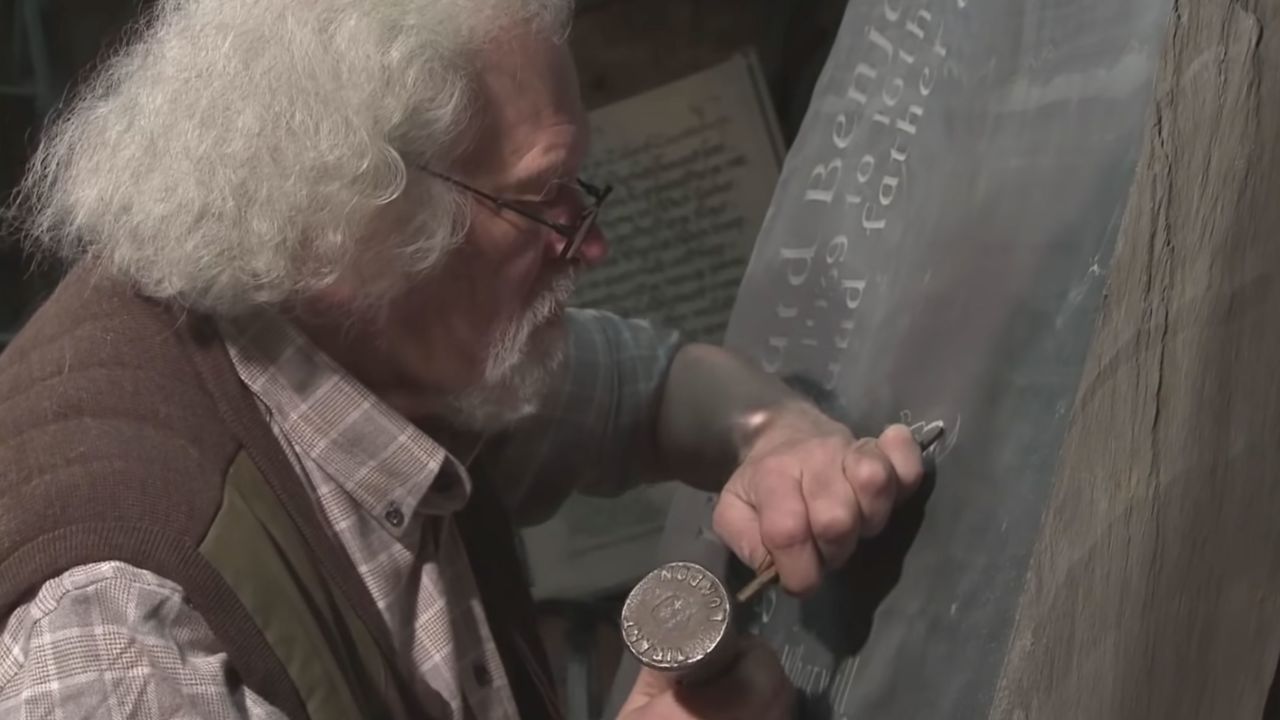CNN
—
In early 2018, medical school lecturer Dr. James Gill was at a pub drinking with friends ahead of competing in the fifth season of the reality show “The Island with Bear Grylls.”
His appearance on the show would generate a brief dalliance with mainstream fame. He had no idea at the time that he was already a household name for hundreds of thousands of people across the globe.
Warwick University Medical School, where Gill teaches, had posted a series of videos in which doctors demonstrated common medical examinations on its YouTube account. A number of these featured Gill performing things such as a clinical hand examination and a cranial nerve exam. While the professor had all but forgotten about them, the internet had not.
During his pre-reality show send off, a friend turned to him and nonchalantly asked, “You do realize that people listen to your videos more than you thought?”
Videos posted on the medical school’s YouTube page generally struggle to get more than 1,000 views. While videos featuring Gill make up less than 15% of the videos posted by the school, several videos he’s in have 1 million or more views.
Gill is one of a growing number of people – many in medical or artistic fields – who have found themselves catapulted into the digital limelight after becoming accidental stars in the ASMR community.
For the uninitiated, ASMR stands for Autonomous Sensory Meridian Response and is the name for a variety of sensations, such as a sense of ease or calm and a tingling of the head experienced by some people when experiencing stimuli such as light tapping, whispering, gentle hand movements and hairbrushing. Over the last few years, it has gone from niche YouTube genre to full-on cultural sensation, with #ASMR surpassing 700 billion views on TikTok.
ASMR videos come in all shapes and sizes. Video creators, or ASMRtists as many call themselves, role play in a wide array of scenarios, from a visit to the barber to an alien abduction. ASMR subgenres you might have come across include soap cutting and playing with slime.
One of the most viewed ASMR videos features a woman eating a tray of candy, meringues, and jelly – it has been viewed over 450 million times.
Although the content of ASMR videos varies tremendously, what remains consistent is the physical impact they have on viewers who are susceptible to them.
Giulia Poerio, a psychology lecturer at the University of Essex, was the first to conduct a scientific study into ASMR. She defines it as a “pleasant tingling sensation that starts at the back of the head and can spread down throughout the rest of the body.
“It’s associated with feelings of euphoria, but also intense relaxation. So often people describe it as a kind of hypnotic trance-like state,” she told CNN.
For many, the sensation is epitomized by the soft-spoken painting instructions delivered by TV presenter and artist Bob Ross, who is considered the “Godfather of ASMR” by many devotees. Over the last 10 years, Ross’ popularity – and his voice, have enjoyed a resurgence that has dovetailed with the rising interest in ASMR.
ASMR arguably hit the mainstream in 2020. Billie Eilish won the 2020 Grammy for best album with the ASMR-tinged “When We All Fall Asleep, Where Do We Go?” The year before, Zoë Kravitz starred in an ASMR Super Bowl commercial for Michelob Ultra beer.
A relaxing, tingly moment of zen became a way for many to escape the stresses of the Covid-19 pandemic. Medical settings were already a hugely popular setup for professional ASMR creators and there was a sudden rush of videos with titles like “Taking Care of You Through Covid (ASMR)” and “ASMR for Covid anxiety.”
There are now millions of ASMR videos on YouTube and the top channels have received billions of views.
Despite the work these creators put into their videos, accidental ASMR is one of the most popular sub-genres for viewers. These videos feature ordinary people who are not trying to elicit an ASMR response, but still manage to have that effect. It’s these videos that catapult humble med school professors into the bright lights of ASMR celebrity.
Gill was completely unaware of ASMR, despite being one of its rising stars, and still doesn’t entirely understand why his videos have generated such a loyal following.
Despite being taken aback by the success of his videos, Gill has embraced his fans, launching his own YouTube channel featuring medical instructional videos, as well as book readings.
The comments to his videos are overflowing with praise from loyal viewers. While some are from engaged medical students, most follow the theme of a comment on his most popular video, a cranial nerve examination demonstration, which states “His voice is pure creamy butter.”

This personal channel, which has amassed more than 40 million views and over 150,000 subscribers, has allowed Gill to engage with viewers who say the videos have helped them with a number of problems, such as anxiety and sleep issues.
Despite not setting out to pursue this success, Gill has embraced it.
“If somebody’s benefiting because of anxiety – great. And if they also happen to learn something about their own bodies – how it works so that they might be less anxious should they get a cough, they’ll know ‘these are the things I should look for that could be worrying’ – absolutely excellent,” Gill said.
Cranial nerve examinations, both real and staged, are one of the most popular ASMR conceits, with some videos receiving upwards of 10 million views on YouTube.
During the examinations, doctors (or video creators posing as doctors) test a patient’s cranial nerves through a series of assessments, such as testing the patient’s sense of smell, sight and hearing amongst other things. When used as a scenario by professional ASMR creators, the tests are often performed directly to the camera, as if the viewer were undergoing the examination.
This scenario might seem mundane to you, but fans of ASMR can spend hours lost in a state of bliss watching these examinations being performed.
The dominance of this setup amongst ASMR fans may all be down to the legacy of one man who is a legend among fans of accidental ASMR, but was, for a very long time, completely unaware of ASMR’s existence.
Dr. James Kelly is a respected neurologist who has treated military veterans and sports stars and is chief executive of the Marcus Institute for Brain Health at the University of Colorado. He is also a global ASMR superstar.
In 1998, he was recorded performing a cranial nerve exam and neuropsychology test on professional ice hockey player Pat LaFontaine, with the intention of being used for educational purposes.
The videos were released on YouTube in 2011 and discovered by the ASMR community sometime later. Today, they are approaching 40 million views.
LaFontaine is viewed as one of the best ice hockey players in history and is, objectively, a bigger mainstream celebrity than Kelly. However, it is not the Stanley Cup-winning athlete that people are coming to watch.

“The idea of that having reached that many viewers is unimaginable to me,” Kelly said, laughing, when he first heard about the extent of his videos’ popularity.
But his influence goes deeper than just millions of views – Kelly has the rare accolade of being a meme amongst fans of accidental ASMR.
Scroll through the comments section of most ASMR videos, and it won’t be long until you find people referencing a line spoken by Kelly.
At one point in the video, he apologizes for his “sandwich breath.” This line can be found posted in accidental ASMR forums, in tweets and even on mugs and T-shirts for sale on Teespring and Amazon.
When somebody reaches such a level of fame that they have their own catchphrases and unofficial merch, you’d expect them to be hounded by fans – or at the very least, be aware that these fans exist.
But, when CNN informed him that lines from a video filmed over 20 years ago had become in-jokes for the ASMR community, he responded, “I don’t even know what to think about that.”
It was not until a few years ago that Dr Kelly became aware of his growing internet fame. He had forgotten about the videos entirely until LaFontaine, the patient in the videos, made him aware that they had gone viral.
Despite this surprise, he is undaunted and amused by his celebrity status, saying he’s “very pleased if it helps people” and that he views it as a way of promoting Brainline, the organization that hosts the videos.
Viral fame also came as a surprise to octogenarian Welsh stone carver and calligrapher Ieuan Rees.
A 2012 instructional video he’d recorded with Artisan Media on carving a dragon into stone became a favorite of accidental ASMR fans years after its recording. Rees was unaware for several years, until reporters from around the world started getting in touch wanting to know what it was like to become a “YouTube sensation.”
The video had been reuploaded to the Best Unintentional ASMR YouTube channel and had been viewed around 2 million times. It’s since been viewed over 5.5 million times.
The footage has all the hallmarks of a traditional ASMR video: Rees’ soft lilting voice calmly explains his life’s work to the background tapping noise of him steadily chiseling into stone.
Rees initially found the news of his fame “very embarrassing,” but said he has since “accepted it, rather sort of nervously.”
“I thought about it later and thought if I’ve been blessed, if that is the right word, to have the ability to help people through being honest about my work and my attitude then perhaps I should be grateful that I was able to help people.”
Although he had not heard of ASMR before, and was shocked by his internet celebrity, he was not surprised that people found the video calming.
He said he has long been aware that his voice gives “a lot of comfort to people”, adding that “I have many people telling me that they like to ring me up sometimes just to hear my voice.”
His family has embraced his new status as a niche YouTube celebrity, and he boasts that his children are “more proud than I am. They just show the videos off to people.”
“I’m a bigger hero to them now than when I was looking after them,” he added.

Although he currently has no plans to release more ASMR-themed videos, he doesn’t rule it out entirely.
“Ever since I was a kid I always followed fate rather blindly. So whatever life threw at me I just followed it,” he said. “So if something should happen, that somebody approached me, I’d probably just carry on doing what I’ve always done and follow it.”
Against an online backdrop of crowds of wannabe influencers clamoring for the fickle goal of internet fame and attention, the softly spoken superstars of the accidental ASMR community generally accept their pseudo-celebrity status with a bemused nonchalance.
Their viral success often passing them by, these inadvertent influencers go about their lives with massive cult followings to whom they unknowingly provide a moment of calm at a time of great stress. In many ways, they are the anti-influencer: uninterested in fame, generally disengaged with their followers, and, occasionally, openly suffering from sandwich breath.